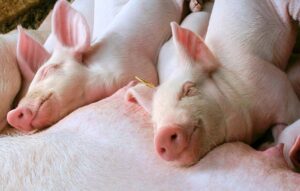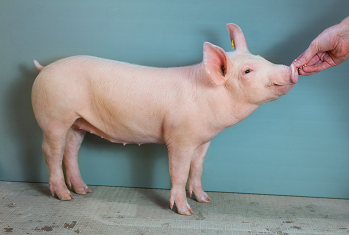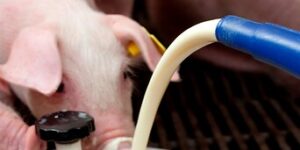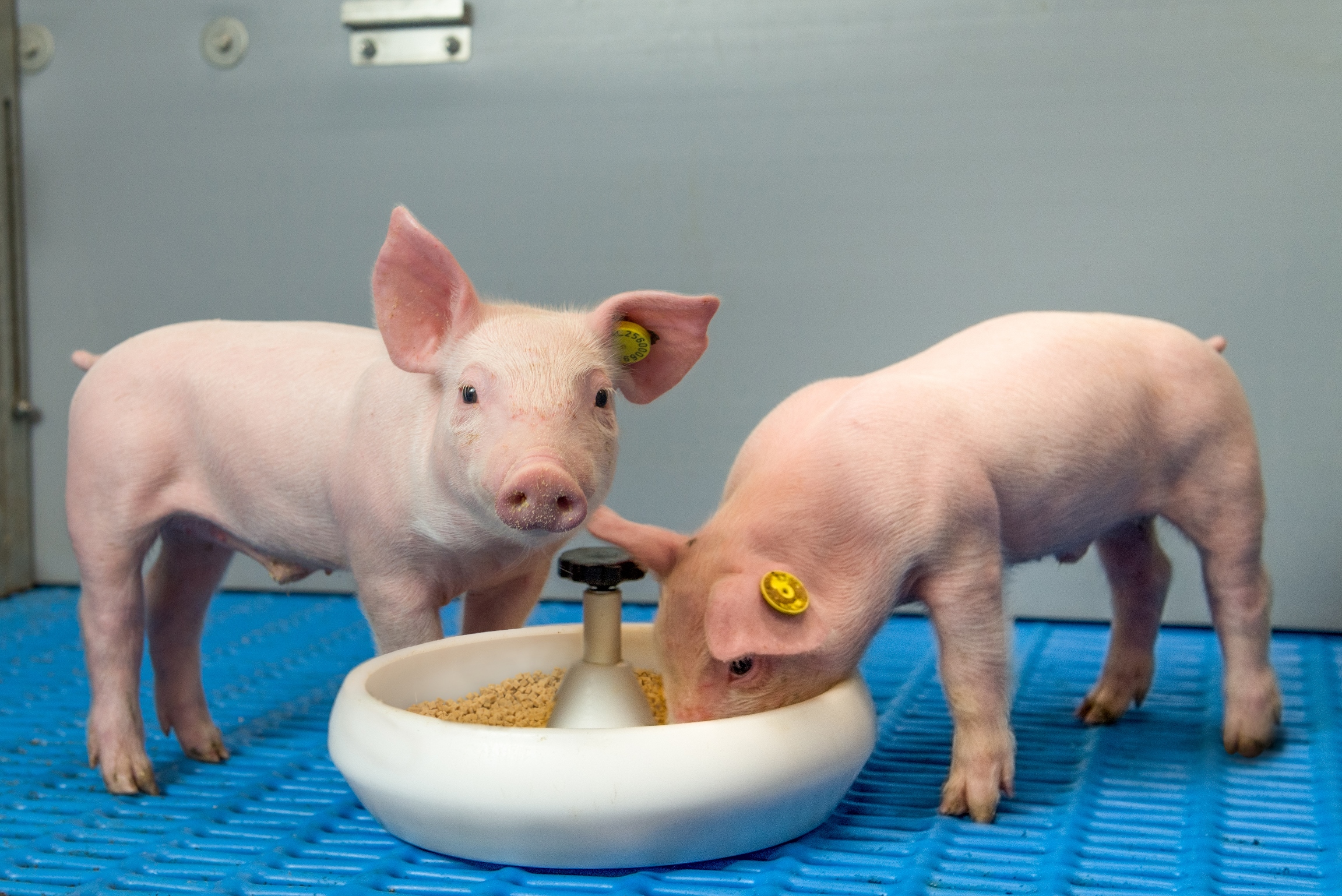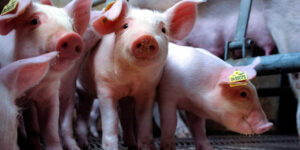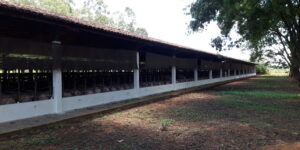The importance of colostrum for newborn piglets
For a newborn piglet, consuming colostrum is crucial for a healthy start in their life. Piglets are born without antibodies against pathogens, and they acquire these antibodies only through the intake of colostrum. Colostrum contains valuable nutrients and antibodies that promote piglet immunity and overall growth. To ensure that piglets benefit optimally from this essential source of nutrition, here are some tips and facts for proper colostrum intake in the farrowing pen.
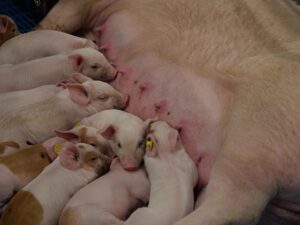 1. A sow already proces colostrum before farrowing
1. A sow already proces colostrum before farrowing
As the sow begins producing colostrum early, the right feed and feeding schedule are important to control udder pressure around farrowing. Additionally, it’s crucial that the sow has enough energy for a smooth farrowing process, as this can help piglets consume sufficient high-quality colostrum.
2. Piglets should drink colostrum as soon as possible
The intestinal wall of piglets becomes less permeable to the absorption of important antibodies 24 to 48 hours after birth. After 24 hours, the absorption of immunoglobulin, present in colostrum, is limited. It is, therefore, important that the newborn piglet drinks colostrum in the first 24 hours after birth and not piglet milk. Piglet milk powder lacks antibodies crucial for immunity. The recommendation is to start with piglet milk only 24 hours after birth.
3. The IgG concentration (antibody) in colostrum gradually decreases after the start of farrowing1,2
After 6 hours, only 50-65% of the original IgG concentration remains, and after 24 hours, only 10-15% of the initial IgG concentration remains. Hence, it is crucial for a newborn piglet to drink colostrum as soon as possible after birth.
4. Colostrum composition differs from milk composition3
The first milk a sow produces up to 24 hours after farrowing is called colostrum, and thereafter, the sow produces regular milk. Colostrum has a higher crude protein content and lower fat content than sow milk.
5. The amount of colostrum a sow produces varies from 1.91 to 5.31 kg4
An average sow produces between 3 and 4 kg of colostrum, but this depends on the litter and the sow itself. Generally, colostrum production is highest in the second and third farrowings.
 6. The amount of colostrum a sow produces is independent of litter size 5,6
6. The amount of colostrum a sow produces is independent of litter size 5,6
This means that when a sow has more piglets per litter, colostrum production does not increase with the number of born piglets. Therefore, the average colostrum intake per pig decreases as the litter size increases. There is much more competition at the udder for piglets to drink colostrum, so ensure that even the small piglets can consume enough colostrum (split suckling).
7. Younger sows produce more colostrum compared to older sows
Parity 2 and 3 sows tended to produce more colostrum than gilts and older sows.5.
8. A piglet must drink at least 160-170 g/kg body weight of colostrum to survive
The more colostrum a piglet drinks, the higher the chances of survival. Colostrum is an important energy source for piglets. After birth, piglets need to maintain their own body temperature, requiring a lot of energy. Mortality in the first days after birth is often associated with insufficient colostrum intake.
9. Split Suckling can help ensure all piglets receive enough colostrum
Separate the first-born larger piglets with full bellies 2-3 hours from the litter to assist later-born smaller piglets in drinking colostrum.
What to watch for?
Colostrum intake in a newborn piglet is crucial for a healthy start, but the sow alone cannot guarantee this. We will need to assist her by implementing the above tips as effectively as possible. By working towards the future before birth, we help newborn piglets with the ideal start for good growth.
In summary
- Provide the pregnant sow with the right feed and feeding schedule.
- Let the newborn piglets drink as much colostrum as possible (alone) in the first 24 hours.
- Support smaller piglets in their struggle to reach the udder to drink colostrum (split suckling).
1 Klobasa et al. (1987), 2 Le Dividich et al. (2006), 3 Denkavit research, 4 Devillers et al (2004), 5 Devillers et al. (2007), 6 Krogh (2017)



